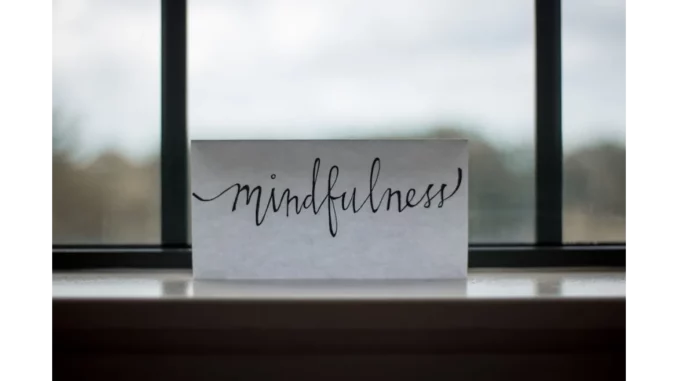
A Report by Sean Taylor
Elegancia – Wellness and tranquillity in the comfort of your home.
In the bustling world of professionals, stress management is a crucial skill, even more so for individuals with disabilities. Finding effective stress-relief techniques can make a world of difference in maintaining both mental and physical well-being. Recently, I had the pleasure of interviewing Lisa Thompson, a corporate lawyer who has navigated the demanding waters of her profession while managing a physical disability. Her insights into mindfulness and meditation as powerful tools for stress management were both enlightening and inspiring.
“I’ve always been a firm believer that your mind is your most powerful asset,” Lisa began, her voice calm yet enthusiastic. “As a busy professional with a disability, I’ve faced unique challenges, but mindfulness and meditation have been game-changers for me.”
Lisa shared how she first encountered mindfulness and meditation during a particularly stressful period in her career. “I was juggling multiple high-stakes cases, and my stress levels were through the roof,” she recalled. “A colleague suggested I try mindfulness and meditation, and at first, I was sceptical. But I decided to give it a shot, and I’m so glad I did.”
Mindful Breathing: A Simple Start
Lisa’s journey into mindfulness began with mindful breathing. “It’s such a simple practice, but it’s incredibly effective,” she noted. “I started by spending just a few minutes each day focusing on my breath. I would sit comfortably, close my eyes, and take slow, deep breaths – inhaling through my nose, holding for a few seconds, and exhaling through my mouth.”
The effect was immediate. “I felt a sense of calm wash over me,” Lisa said. “It was like hitting the reset button on my mind. Mindful breathing helped me stay present and reduced my anxiety significantly.”
Guided Meditation: A Helping Hand
As she grew more comfortable with mindful breathing, Lisa explored guided meditation. “There are so many fantastic apps out there, like Headspace and Calm,” she shared. “I found that guided meditation sessions were really helpful, especially when I was just starting out. They provided structure and guidance, which made it easier to stick with the practice.”
Lisa highlighted the accessibility of these apps, noting that many offer programmes specifically designed for stress relief and relaxation. “You don’t need any special equipment or a lot of time,” she emphasised. “Just a few minutes a day can make a big difference.”
Body Scan Meditation: Increasing Awareness
Another technique that Lisa found particularly beneficial was body scan meditation. “This involves focusing on different parts of your body, from your toes to your head, and noticing any sensations or tension,” she explained. “It’s a great way to increase body awareness and promote relaxation.”
Lisa described how body scan meditation helped her connect with her body in a new way. “As someone with a disability, it’s easy to feel disconnected from your body,” she admitted. “But body scan meditation allowed me to tune into my physical self and address areas of tension. It was incredibly empowering.”
Integrating Mindfulness into Daily Life
One of the most valuable insights Lisa shared was how she integrated mindfulness into her daily life. “It’s not just about setting aside time for meditation,” she said. “It’s about being mindful throughout your day.”
Lisa provided practical examples of how she practised mindfulness in everyday activities. “When I’m working on a case, I make a conscious effort to stay present and focused,” she explained. “I also practice mindful eating – paying attention to the flavours and textures of my food, which helps me enjoy my meals more and reduces stress.”
The Broader Impact on Mental Health
The benefits of mindfulness and meditation extend beyond stress relief, as Lisa pointed out. “These practices have improved my overall mental health,” she affirmed. “They’ve helped me develop a greater sense of self-awareness and emotional resilience.”
Lisa also mentioned how mindfulness and meditation have positively impacted her professional life. “I’ve noticed that I’m more productive and better able to handle the demands of my job,” she said. “I’m less reactive and more thoughtful in my decision-making, which has been a huge advantage in my career.”
Advice for Fellow Professionals with Disabilities
When asked what advice she would give to other busy professionals with disabilities looking to manage stress, Lisa’s response was heartfelt. “Start small and be patient with yourself,” she advised. “Mindfulness and meditation are practices that develop over time. You don’t have to be perfect – just consistent.”
Lisa also emphasised the importance of finding what works for you. “Everyone is different, so experiment with different techniques and see what resonates,” she suggested. “Whether it’s mindful breathing, guided meditation, or body scan meditation, there’s no one-size-fits-all approach.”
Conclusion: A Path to Greater Well-Being
Lisa’s journey is a testament to the power of mindfulness and meditation in managing stress, especially for busy professionals with disabilities. Her experiences highlight that with just a few minutes a day and a commitment to staying present, it is possible to significantly reduce anxiety and improve overall mental health.
As we wrapped up our conversation, Lisa left me with a final thought. “Remember that taking care of your mental health is just as important as taking care of your physical health,” she said. “Mindfulness and meditation are incredible tools that can help you achieve a balanced, fulfilling life.”
Through Lisa’s story, it’s clear that mindfulness and meditation offer a path to greater well-being for busy professionals with disabilities. By incorporating these practices into daily life, it’s possible to stay present, reduce anxiety, and improve overall mental health – a powerful message for anyone navigating the demands of a challenging career and personal life.
Sean Taylor


Be the first to comment